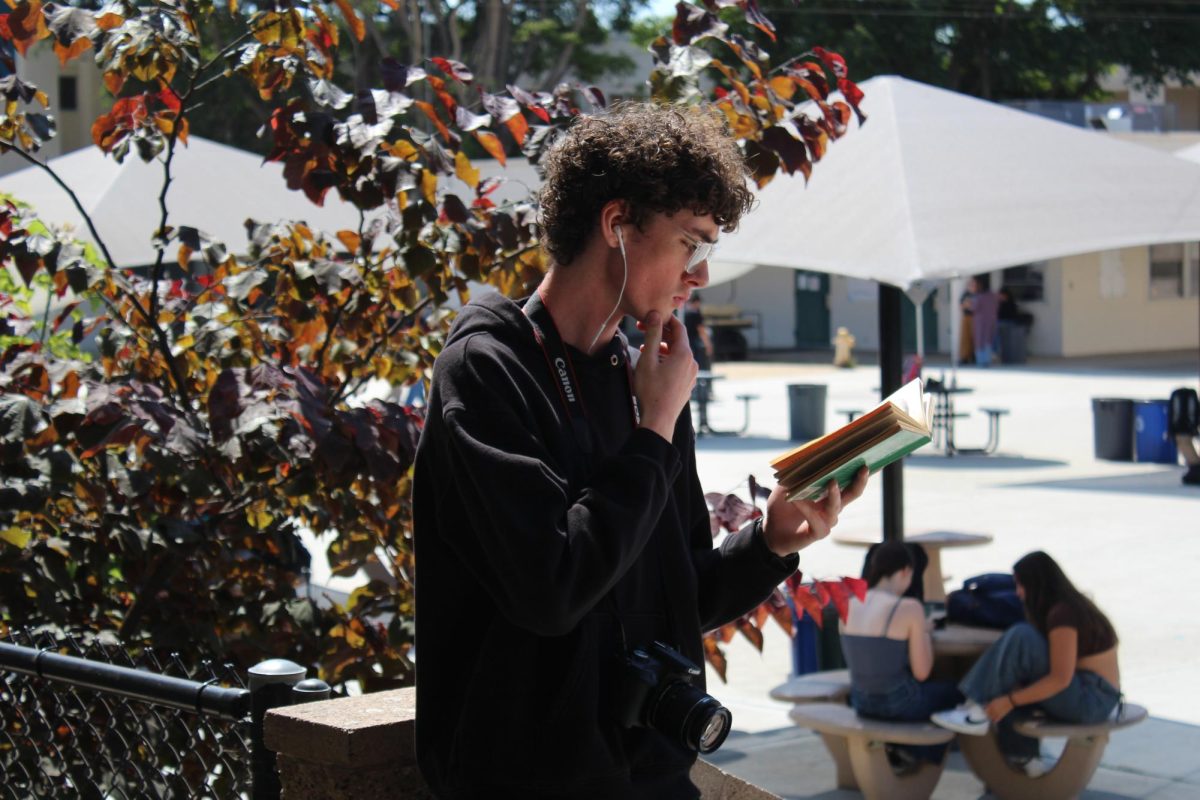The rule against using electronics at Ventura High School states that “All electronic devices are not to be used or displayed during instructional time anywhere on campus,” but the rule is so outdated that even teachers break it everyday. Seriously, why have a rule that no one follows?
First off, this regulation doesn’t make any sense because students use technology everyday with their teachers during class. I personally believe that this ban on technology contradicts the fact that teachers use technology everyday in order to convey information in a more interesting and engaging way.
In my second and sixth period classes, students use chromebooks almost everyday and my third period teacher even allows students to use their smartphones. I personally have used an electronic device to replace encyclopedias, calculators, cameras, books, camcorders, and many other tools available on a smartphone.
For example, “Technology is the main thing that I use when researching for a paper. I also use electronics if I need a calculator, camera, or other necessities that I have in my life,” junior Andrea Garcia said.
I mean seriously, nothing is worse than a monotone, dry, boring lecture that forces students to play on their phones just to stay awake. Yes, Snapchat, Twitter and Instagram can be very enticing when I should be paying attention to a lesson.
As a part of an electronic generation, I believe that teaching tactics need to be updated in order to keep students engaged. By utilizing electronic devices for educational purposes within the classroom, learning would become more engaging to my technology-based generation and improve student attention and involvement as well.
“Abilene Christian University conducted research that found [that] math students who used the iOS app, ‘Statistics 1,’ saw improvement in their final grades,” according to The Conversation. In this study, researchers found that when teachers allow students to use technology, they can improve their learning and academics.
Electronic devices can also be used by students for reading. The textbooks that students have to transport back and forth from school and home is tiring to say the least. However, electronic devices have most of the books that students are given available online for students to access, thus eliminating the back pain students suffer from when hauling these heavy textbooks around campus. “I often have to take [text]books home for my classes. By the time I get home, my back and neck are killing me,” said sophomore Jennifer Martinez.
Textbooks also are very expensive to purchase and require an immense amount of money to buy new ones. According to Education Week, a Digital Textbook Collaborative from a research project that examines the use of technology in education known as, Project RED, it was found that “A school with 500 students can save between $35 and $250 per student every year by switching to digital textbooks.” This proves that electronic devices could save schools, including VHS, a large amount of money.
Overall, this rule is outdated and is in need of some updates. When students use their electronic devices in class with their teacher, students are immediately able to use them for research. Electronic devices also allow students to partake in school activities, as well as ease the cost of textbooks and help with potential health problems. To me, it’s just contradicting that the rule was implemented in the first place. Hopefully what I’ve just written will convince administration to fix this rule and create a new and improved one.














